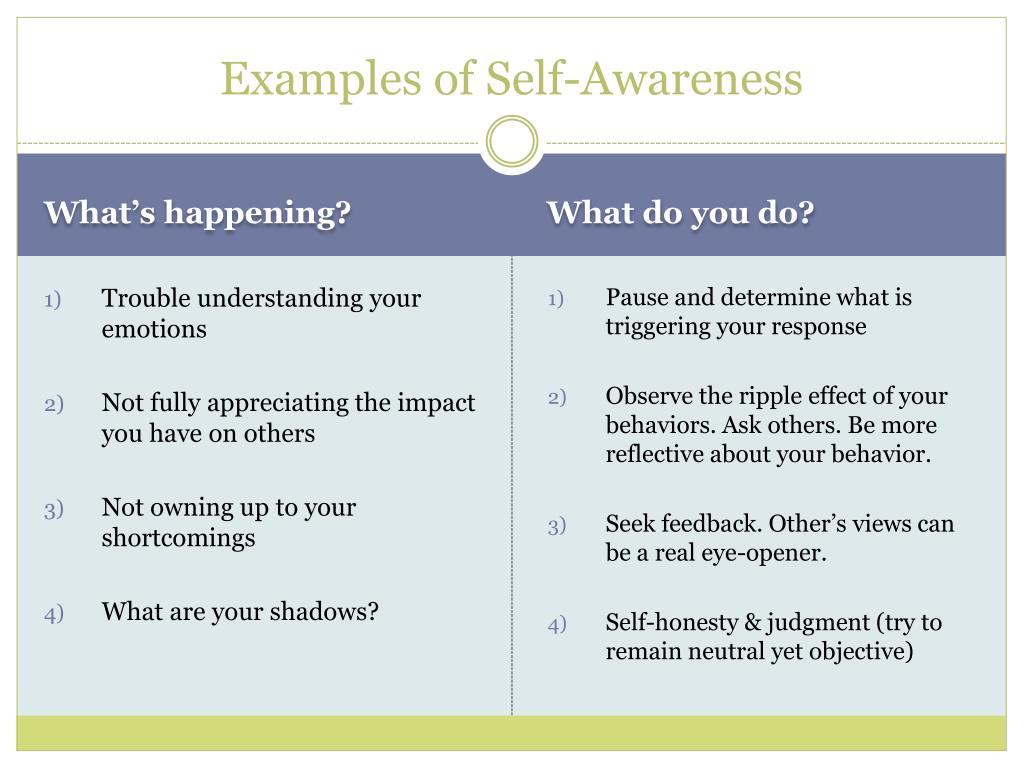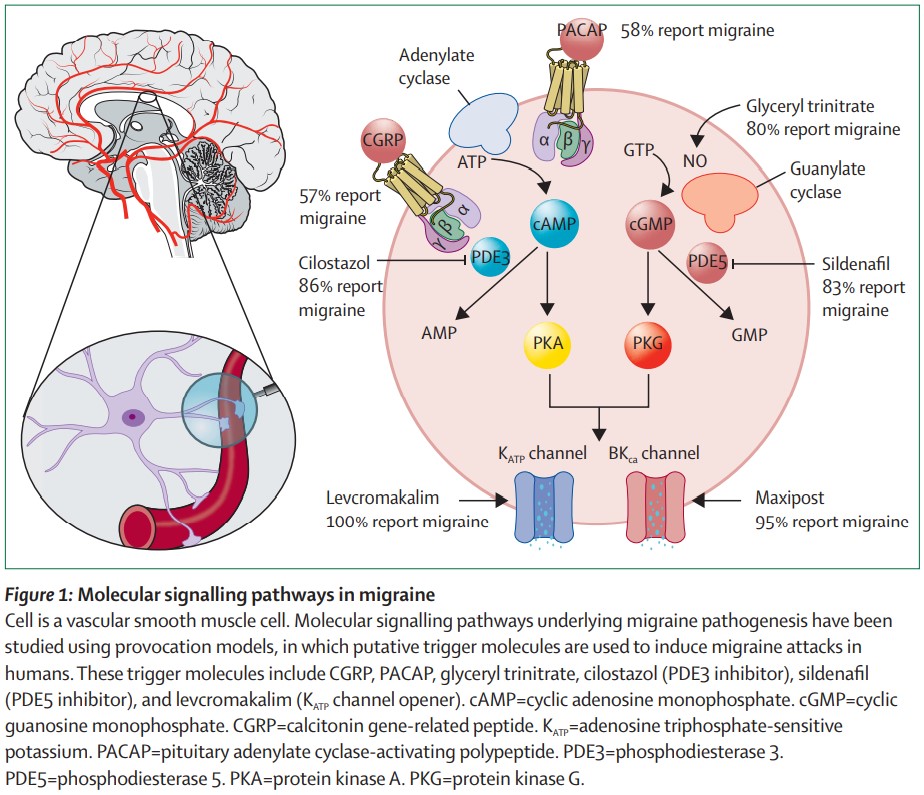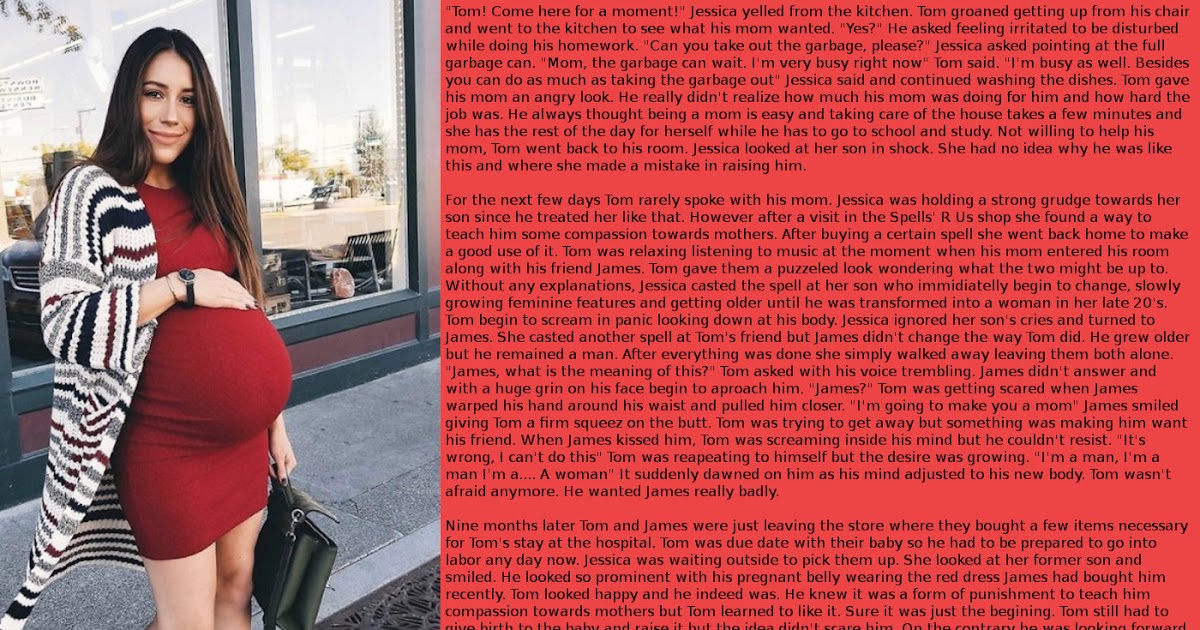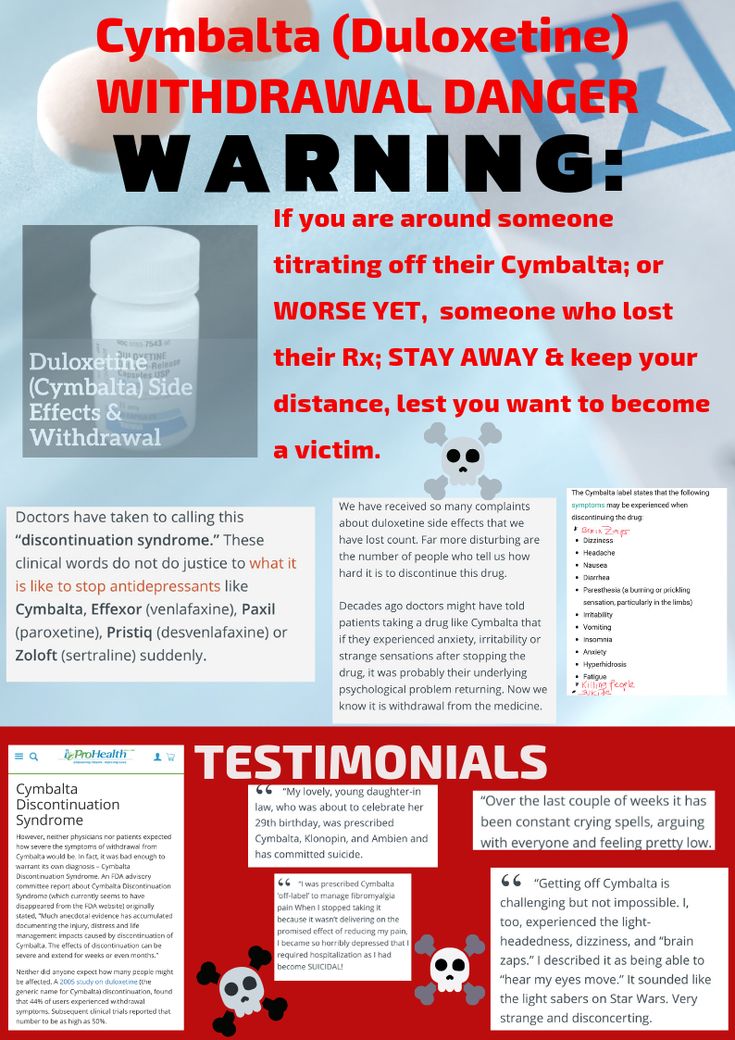Sensory disorder test
Adult Symptom Test for SPD
What causes sensory overload? If you find itchy tags unbearable, loud music intolerable, and perfume simply sickening, you may have Sensory Processing Disorder (SPD) — a condition that disrupts the way the brain takes in, organizes, and uses the messages received through the eyes, ears, muscles, joints, skin and inner ears. SPD may cause sensory overload, but it may also cause you to crave sensory stimulation through deep-tissue massages, winding motorcycle rides, or skydiving adventures. The manifestations of SPD are varied — and sometimes contradictory — making diagnosis difficult.
If you avoid hugs, hate flossing your teeth, just can’t tolerate scented candles, have always felt clumsy, or can't get dressed without a mirror, take this self-test to better understand the daily manifestations of SPD symptoms in adults. Then share the results with an occupational therapist or a medical professional who is knowledgeable about SPD for an evaluation.
Adapted from the SPD Foundation’s Sensory Processing Disorder Checklist designed to to screen the possibility of sensory processing disorder. Note: This is not a diagnostic tool. If you have concerns about possible Sensory Processing Disorder see a mental health professional. An accurate diagnosis can only be made through clinical evaluation. Screener for personal use only.
I find myself bumping into things a lot, knocking stuff over, and tripping over my own feet.
Very Often
Often
Sometimes
Rarely
Never
When I’m in a car with other people, I’m always asking, “Can we turn down the radio volume?”
Very Often
Often
Sometimes
Rarely
Never
My handwriting is illegible. I'm told I have "difficult-to-read" penmanship.
Very Often
Often
Sometimes
Rarely
Never
I wear anything that’s loose and flowy, like caftans.
Very Often
Often
Sometimes
Rarely
Never
Hugs even from those I'm close to can make me feel uncomfortable.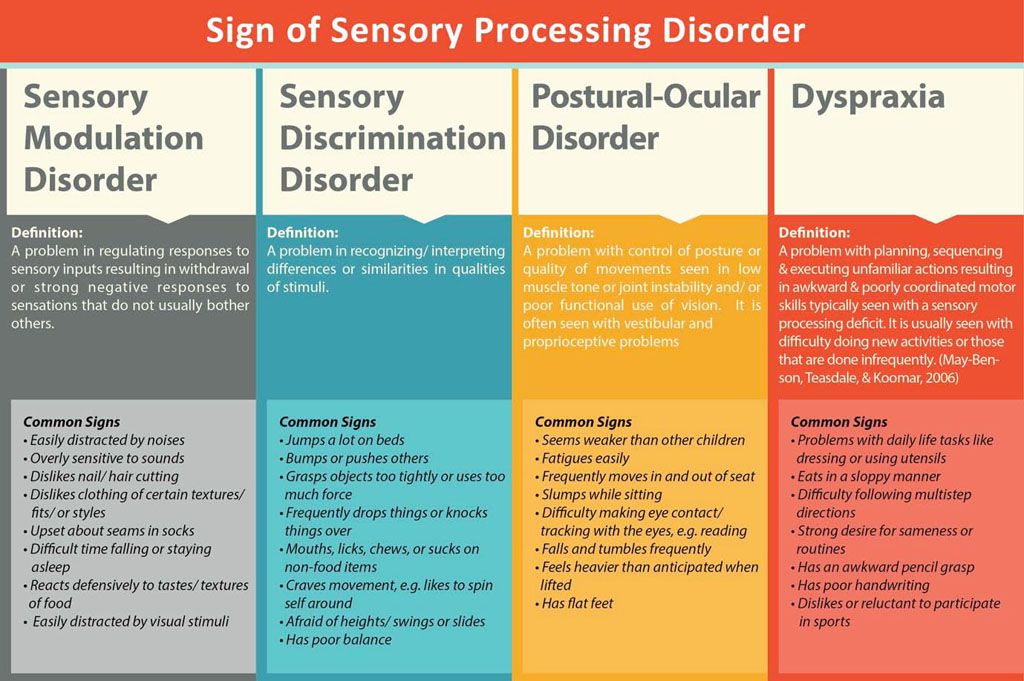
Very Often
Often
Sometimes
Rarely
Never
I avoid walking through the perfume department at all costs. Scented candles — even the most subtle ones — bother me.
Very Often
Often
Sometimes
Rarely
Never
I avoid some foods because of the texture. I would rather go hungry than eat a mushy banana.
Very Often
Often
Sometimes
Rarely
Never
Daily activities can be hard to do if I'm not able to see what I'm doing. I can’t get dressed or brush my teeth without looking in a mirror. I can’t find the seat belt in my car without twisting to see it. When I type on the keyboard, I have to look at what my fingers are doing.
Very Often
Often
Sometimes
Rarely
Never
The thought of having to walk through the sand to get to the ocean or a lake can ruin the fun of a swim.
Very Often
Often
Sometimes
Rarely
Never
The sound of a dripping faucet or a crack of sunlight coming in from around my shades wakes me out of the deepest sleep.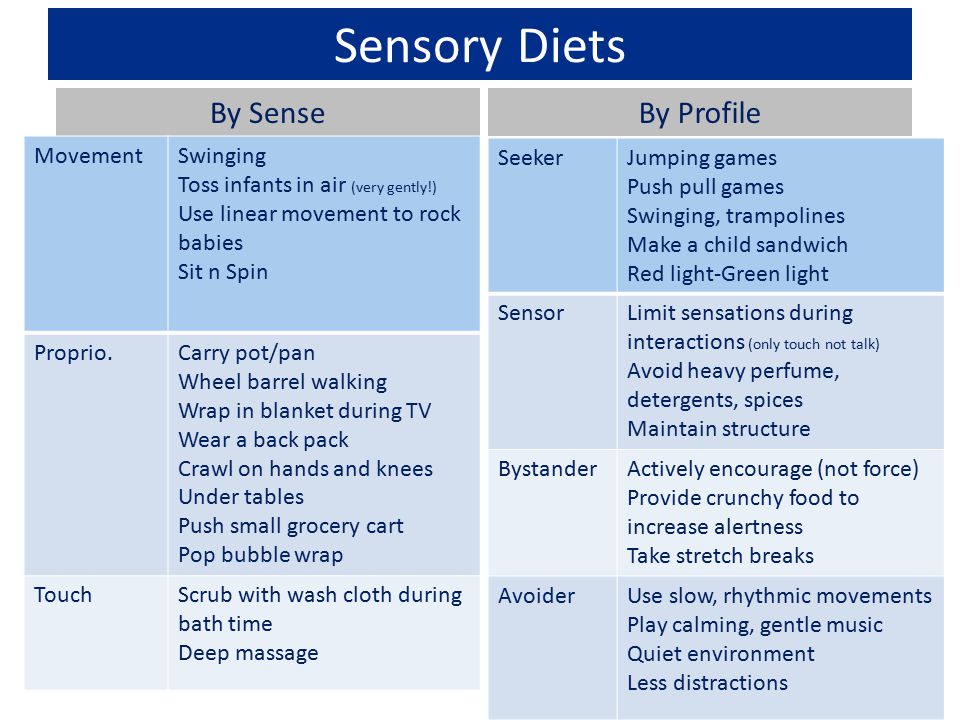
Very Often
Often
Sometimes
Rarely
Never
I enjoy high-adrenaline activities. There’s nothing more thrilling than riding in the first car of a rollercoaster, except maybe riding my road bike at top speed and zip-lining from tree tops.
Very Often
Often
Sometimes
Rarely
Never
I avoid public speaking. The bright spotlight, the possibility of falling off the stage, and the squawking mic make me very anxious.
Very Often
Often
Sometimes
Rarely
Never
I prefer to wear tagless shirts and seamless socks. I cut the tags out of my clothes and would rather go naked than wear wool.
Very Often
Often
Sometimes
Rarely
Never
When everyone else is sweating or shivering, I’m usually somewhere in the middle.
Very Often
Often
Sometimes
Rarely
Never
Being in a crowded elevator makes me want to break out and run.
Very Often
Often
Sometimes
Rarely
Never
Flickering lights — or even worse, strobe lights — send me over the edge. I’m instantly nauseous.
Very Often
Often
Sometimes
Rarely
Never
(Optional) Would you like to receive your sensory processing disorder symptom test results — plus more helpful resources — via email from ADDitude?
Subscribe me to your newsletter!
Can’t see the self-test questions above? Click here to open this test in a new window.
Sensory Processing Disorder: Next Steps
1. Take This Test: Emotional Hyperarousal in Adults with ADHD
2. Read Hypersensitivity Is Not Imagined
3. Read 3 Defining Features of ADHD That Everyone Overlooks
4. Read What is Sensory Processing Sensitivity?
5. Take This Test: Executive Function Disorder in Adults
6. Download Are Your Senses in Overdrive?
7. Find an ADHD or SPD specialist nearby in our ADDitude Directory
Find an ADHD or SPD specialist nearby in our ADDitude Directory
8. Research Treatments for Sensory Processing Disorder
Previous Article Next Article
Symptoms & Signs in Children
What Is Sensory Processing Disorder?
Sensory Processing Disorder (SPD) — formerly referred to as sensory integration dysfunction — is a neurological condition that interferes with the body’s ability to interpret sensory messages from the brain and convert those messages into appropriate motor and behavioral responses. It's not uncommon to feel occasional sensory overload — that is, to feel overwhelmed by distracting noises or crowded spaces or strong odors once in a while — but for children with SPD, these sensations disrupt and overwhelm everyday life.
Sensory Processing Disorder may make it difficult to filter out unimportant sensory information, like the background noise of a busy school hallway, and causes children to feel overwhelmed and over-stimulated in certain environments. Or SPD may make it difficult to take in important sensory information; a child who has tripped may not react quickly enough to soften her fall, for example. In addition, SPD may make it difficult to pinpoint the source of bodily pain or gauge the appropriate pressure to use when writing with a pencil. SPD may make children feel that their bodies are uncooperative, that they always disappoint others, and that they are failures.
Or SPD may make it difficult to take in important sensory information; a child who has tripped may not react quickly enough to soften her fall, for example. In addition, SPD may make it difficult to pinpoint the source of bodily pain or gauge the appropriate pressure to use when writing with a pencil. SPD may make children feel that their bodies are uncooperative, that they always disappoint others, and that they are failures.
What Are the Symptoms of Sensory Processing Disorder in Children?
These emotions may manifest as anxiety or temper tantrums or meltdowns — all reactions that may understandably be mistaken for attention deficit hyperactivity disorder (ADHD). But if your child gets upset consistently in the same noisy or smelly environment, or when asked to eat the same specific foods as other kids, or when bothered by itchy tags in his clothing, or when frustrated figuring out how to orient his body to get dressed, he may be dealing with SPD.
Other children with SPD crave activities that will stimulate their senses. This could entail riding a bicycle too fast down a steep hill or performing flips on the monkey bars — daredevil acts that could, likewise, look a lot like ADHD hyperactivity. Another difficulty is poor discrimination of sensations. Is the water hot or cold? Is this the right buttonhole? Has the steak been chewed sufficiently before swallowing? Did someone say "Go" or "No?" Is that word "bug" or "dug?" These kids may have sensory processing challenges, not attentional issues.
This could entail riding a bicycle too fast down a steep hill or performing flips on the monkey bars — daredevil acts that could, likewise, look a lot like ADHD hyperactivity. Another difficulty is poor discrimination of sensations. Is the water hot or cold? Is this the right buttonhole? Has the steak been chewed sufficiently before swallowing? Did someone say "Go" or "No?" Is that word "bug" or "dug?" These kids may have sensory processing challenges, not attentional issues.
In the self-test below, select the statement that most accurately describes your child's behavior and share the results with your child’s physician.
Adapted from the SPD checklist from the STAR Institute for Sensory Processing Disorder. This is not a diagnostic tool. An occupational therapist trained in sensory integration is the best professional to make an accurate diagnosis through clinical evaluation.
My child gets in trouble in gym class for tackling during flag football.
Very Often
Often
Sometimes
Rarely
Never
School picture day sends my child home in tears every year.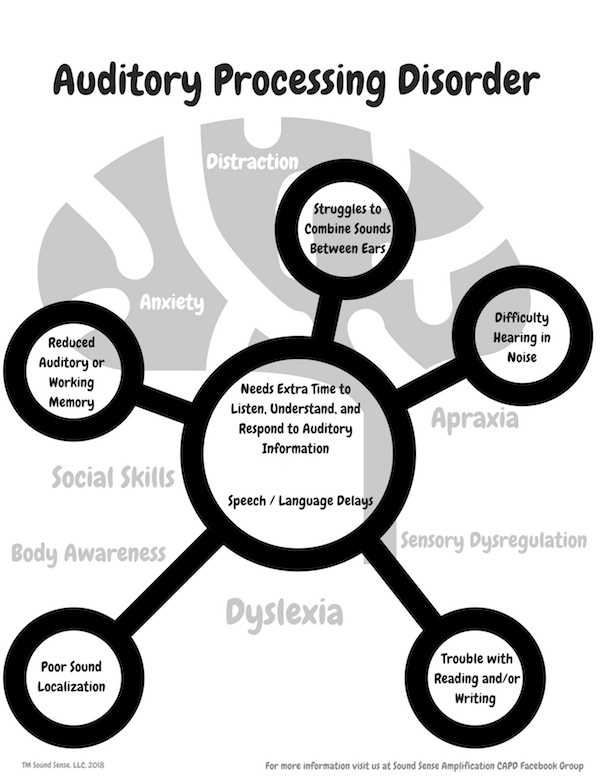 The camera flashes hurt their sensitive eyes.
The camera flashes hurt their sensitive eyes.
Very Often
Often
Sometimes
Rarely
Never
My child gags when trying to swallow a pill. They prefer liquid antibiotics and chewable vitamins.
Very Often
Often
Sometimes
Rarely
Never
Thunderstorms terrify my child. The loud booms and cracks send them cowering under the blankets.
Very Often
Often
Sometimes
Rarely
Never
My child loves amusement park rides, but can’t tolerate the long lines and crowds.
Very Often
Often
Sometimes
Rarely
Never
My child is bothered by anything slimy or sticky on his fingers, like paint.
Very Often
Often
Sometimes
Rarely
Never
My child has poor balance and coordination, and tends to trip over their own feet. Keeping up with other kids in games like jumping rope and climbing trees can be difficult.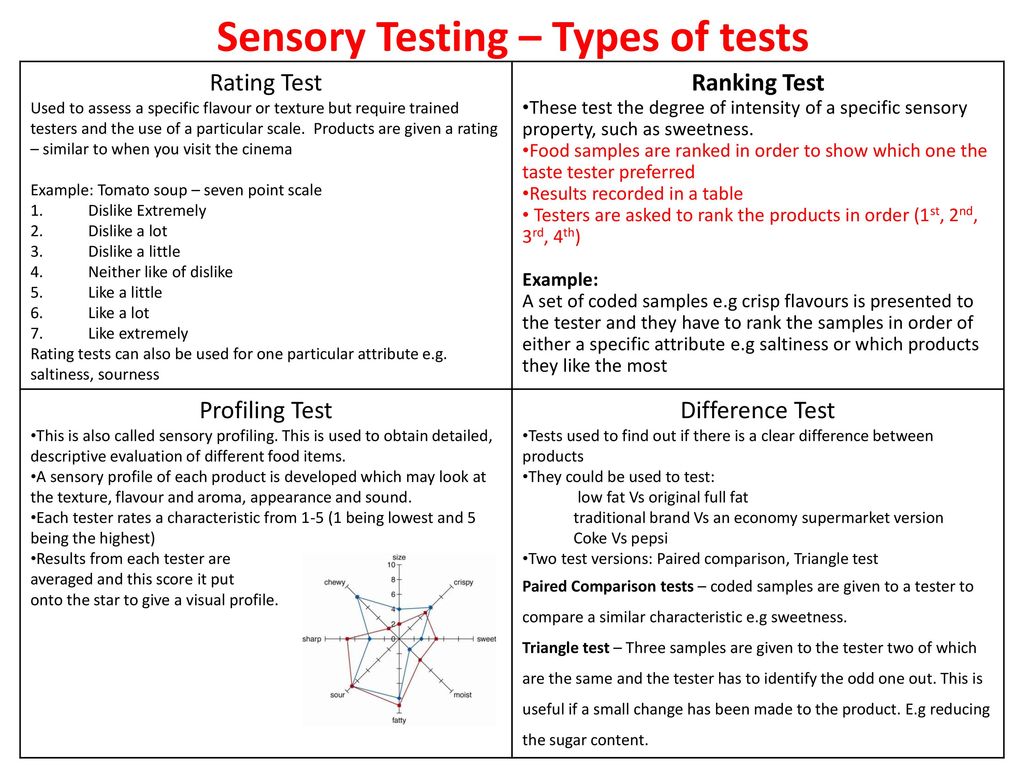
Very Often
Often
Sometimes
Rarely
Never
My child prefers to go on one ride at the carnival, like the merry-go-round, over and over.
Very Often
Often
Sometimes
Rarely
Never
My child refuses to change for gym class, saying the locker room is too stinky.
Very Often
Often
Sometimes
Rarely
Never
Bath time can be difficult. My child hates being sprayed with water and having their hair combed before bed, which leads to tantrums.
Very Often
Often
Sometimes
Rarely
Never
My child loves salsa (the hotter the better) and drinks pickle juice right out of the jar.
Very Often
Often
Sometimes
Rarely
Never
My child spits out foods like cooked peas or bananas pieces if they’re the slightest bit mushy.
Very Often
Often
Sometimes
Rarely
Never
My child dislikes buying lunch at school and complains about being grossed out.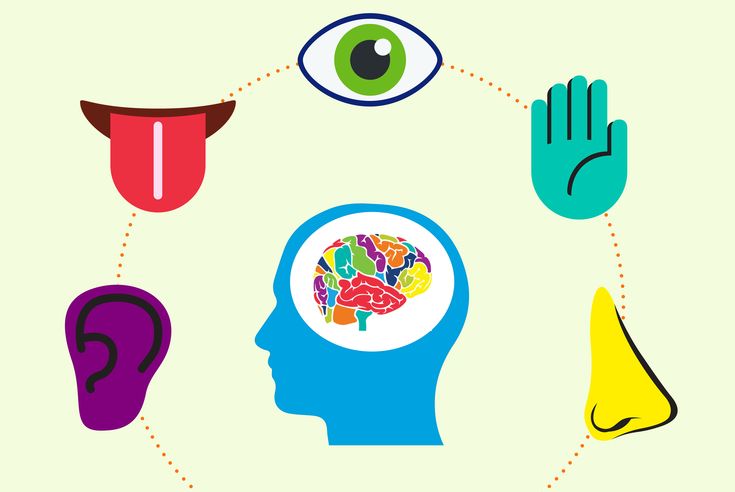 Even seeing apple sauce on their tray as dessert gives them the heeby jeebies.
Even seeing apple sauce on their tray as dessert gives them the heeby jeebies.
Very Often
Often
Sometimes
Rarely
Never
My child has too much trouble fastening buttons and tying laces, and prefers to wear "easier" items like zip-up sweatshirts and Velcro sneakers.
Very Often
Often
Sometimes
Rarely
Never
My child complains about being barefoot in the sand when at the beach.
Very Often
Often
Sometimes
Rarely
Never
I have to buy tagless, itchless clothes for my child – the looser the better.
Very Often
Often
Sometimes
Rarely
Never
I have to use unscented detergent. Washing my child's sheets with any scent leads to a meltdown.
Very Often
Often
Sometimes
Rarely
Never
(Optional) Receive your Sensory Processing Disorder Symptom Test results — plus more helpful resources — via email from ADDitude.
Subscribe me to your newsletter!
Can’t see the Sensory Processing Disorder symptoms test above? Click here to open this test in a new window.
Sensory Processing Disorder in Children: Next Steps
1. Take This Test: Does My Child Have ADHD?
2. Take This Test: Oppositional Defiant Disorder in Children
3. Take This Test: Executive Function Disorder in Children
4. Research Treatments for Sensory Processing Disorder
5. Read “I’m Overloaded!” Responding to Sensory Dysfunction
Previous Article Next Article
Sensory Integration Test | Healing Sound AVAILSOUND
Sensory Integration Test.
Signs of tactile dysfunction.
(Tactile sensitivity is what a person feels when touching an object.)
D hypersensitivity:
avoidance of games where you can get dirty, refusal of intrusive and light touches, kisses,
refusal of coarse clothing refusing to take a bath, shower or go to the beach.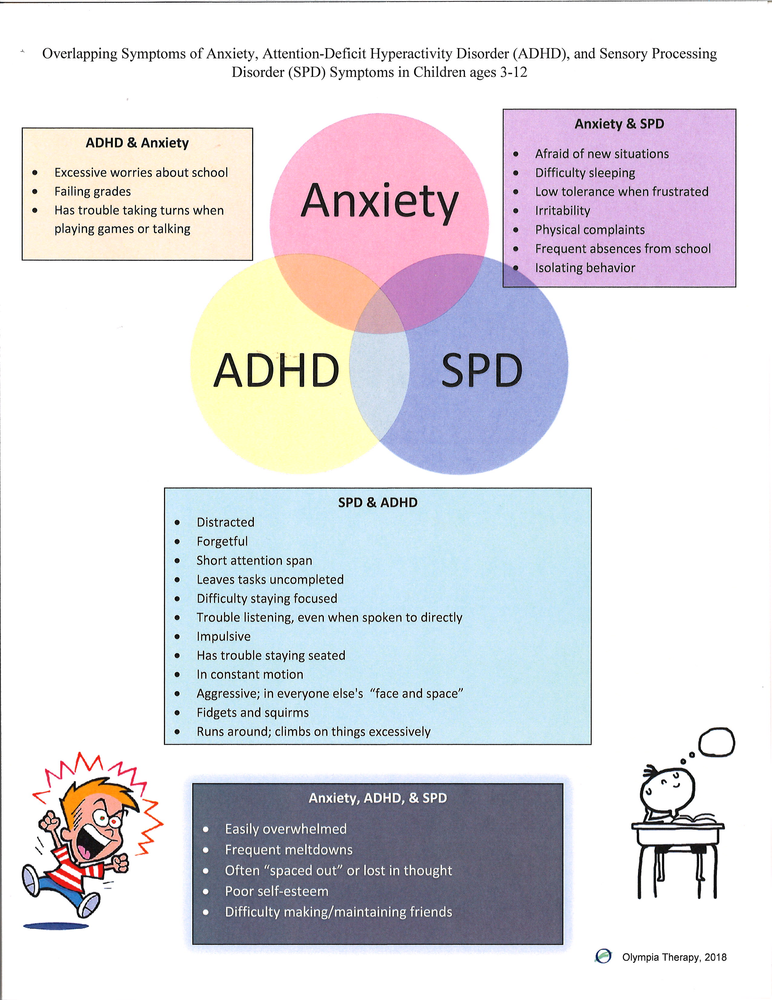 nine0007 N insufficient sensitivity:
nine0007 N insufficient sensitivity:
the child does not feel that the hands or face are dirty, constantly touches or touches something, plays rudely with peers, does not feel pain well or even enjoys it.
Signs of vestibular dysfunction.
hypersensitivity:
avoids playgrounds, swings, playground carousels, afraid of heights, dislikes being upside down, afraid of falling, dislikes fast, sudden or repetitive movements. nine0007 L Lack of sensitivity:
is constantly on the move, running around or spinning, seems to be unable to sit still for a minute, seeks constant "excitement", shakes his legs when sitting, likes to be tossed up, never seems to dizzy, full of energy.
Signs of proprioceptive dysfunction.
slow reaction:
constantly jumping, crashing, stomping, stomping, likes to be hugged tightly, squeezed tightly, likes tight clothes, treats other children rudely or even aggressively.
B quick reaction:
difficulty in perceiving one's own body in space, clumsiness, bumps into corners, objects, stumbles and clings to everything.
Since false estimate of own forces:
does not understand what force must be applied to move an object, cannot estimate the weight of an object, therefore often breaks objects, cannot calculate the force of pressure and therefore tears the paper when drawing. nine0003
Signs of auditory dysfunction.
hypersensitivity:
covers ears with hands to loud, sharp sounds that others do not cause a reaction (toilet water, hair dryer, vacuum cleaner, intolerance to noisy places).
- H low sensitivity:
does not respond well to speech, likes too loud music or makes noise, does not understand where the sound source is, constantly asks again.
Gustatory disorientation.
hypersensitivity:
picky eating, limited choice of foods.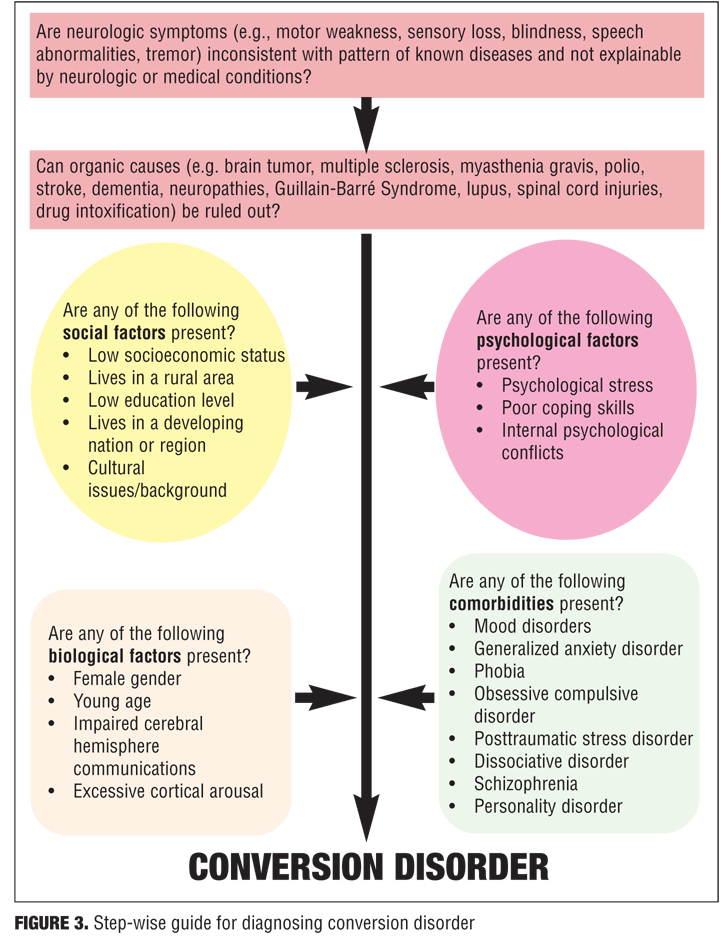 May choke on solid food, cannot chew and swallow properly, dislikes dentists, hates toothpaste and brushing teeth.
May choke on solid food, cannot chew and swallow properly, dislikes dentists, hates toothpaste and brushing teeth.
With reduced sensitivity:
licks, tastes inedible objects, loves food with a pronounced pronounced taste. There may be profuse salivation. Gnawing on pens, pencils or shirt collars. nine0003
Signs of a sensory disorder.
hypersensitivity:
intolerant of various odours, avoids places where it smells unpleasant, selects food by smell, reacts to odors more acutely than others.
With reduced sensitivity:
does not notice unpleasant or pungent odors, sniffs everything that it encounters, poorly distinguishes odors.
Signs of visual dysfunction. nine0006
hypersensitivity:
irritated by bright light, easily distracted by visual stimulus, avoids eye contact, aroused by bright walls or wallpaper in room.
With reduced sensitivity:
does not follow moving objects well, confuses similar letters, focuses on individual details of the picture without noticing it in its entirety, cannot follow the line when reading or copying from the board.
Since the symptoms of a sensory integration disorder should not go unnoticed. And if you notice any of the above symptoms in your child, contact an Integral Sensory Therapy specialist who will confirm or refute your fears. nine0003
Ready-made test in the discipline "Psychology of children with disorders of the emotional-volitional sphere and behavior" for UrIPKiP (sdo.urgaps.ru).
or write to us now
Question 1
Sensory integration sessions shown at:
Select one answer:
a. deficiency of the sensory integration process
b. cerebral palsy
c. autism
Question 2
Basic sensory diet strategies:
Choose one answer:
a. general soothing strategies
b. all answers listed
c. incentive strategies
incentive strategies
d. soothing strategies
Question 3
Answer whether the following statement is true: “If a specialist working with a child comes to the conclusion that the cause of behavioral or other problems associated with developing an adequate response to sensory stimuli is a deficit in the process of sensory integration, in therapeutic sessions with such a child it may be used the Jean Ayres sensory integration method”:
Choose one answer:
a. correct
b. incorrect
Question 4
Answer whether the statement is true: “The Sensory Integration Method includes the actual theory of sensory integration, a methodology for assessing the level of development of this area and a set of exercises”:
Choose one answer:
a. correct
b. incorrect
Question 5
Answer if the following statement is true: “The sensory integration method is intended for children of preschool and primary school age”:
Choose one answer:
a. incorrect
incorrect
b. correct
Question 6
Answer if the statement is correct: “Sensory perception (discrimination) is the ability of a child to clearly distinguish a sensory stimulus (sensation) and use it to form an adaptive response”:
Choose one answer:
a. correct
b. incorrect
Question 7
The concept of "sensory diet" is:
Choose one answer:
a. limitations in sensorimotor exercises
b. strategies to limit sensory exposure
c. individual set of exercises
Question 8
Principles of sensory integration:
Select one or more answers:
a. all therapeutic interventions are "guided" by the child and supported by the therapist
b. stimulation of sensory processes
c.
